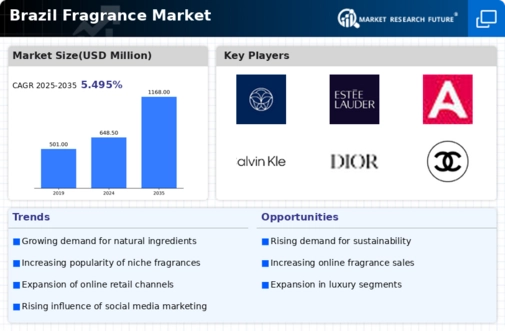The Brazil Fragrance Market presents a vibrant landscape characterized by a diverse array of brands and products, each vying for consumer attention in a highly competitive environment. This market is influenced by various factors including cultural preferences, seasonal trends, and growing consumer awareness regarding personal grooming and self-care. In recent years, the rise of e-commerce has further transformed the competitive dynamics, enabling brands to reach a wider audience while allowing consumers to explore a broader variety of fragrance options.
Brands are now focusing on not only expanding their product lines but also enhancing customer experience through customized offerings and sustainable practices in order to capture the evolving demands of Brazilian consumers. Coty has established itself as a major player in the Brazil Fragrance Market, leveraging its extensive portfolio of well-known fragrance brands to cater to different segments of the market. The company's strengths lie in its ability to innovate and adapt to local preferences, offering products that resonate well with Brazilian consumers. Coty's investment in marketing campaigns also enhances its visibility, making it a preferred choice among fragrance enthusiasts.
Their strong distribution networks across retail outlets and online platforms in Brazil allow them to maintain a competitive edge, ensuring that their products are readily accessible. Additionally, Coty’s commitment to sustainability and responsible sourcing aligns with the growing consumer preference for environmentally-friendly products, further positioning the brand favorably in the evolving market landscape. Estee Lauder is another formidable contender in the Brazil Fragrance Market, known for its premium luxury fragrances that cater to sophisticated tastes. The company offers a range of high-quality products, often emphasizing the unique essence and craftsmanship behind each fragrance creation.
Estee Lauder's strengths in Brazil are propelled by its strong brand heritage and the loyalty it has built over the years among its customers. The company frequently introduces limited edition fragrances and seasonal collections that appeal to local preferences and festive occasions, enhancing its market presence. Estee Lauder has also been active in mergers and acquisitions, which have expanded its product offerings and distribution channels, enabling it to capture a larger share of the market. Its focus on customer engagement through personalized services and events within Brazil has further solidified its position in this dynamic market.










